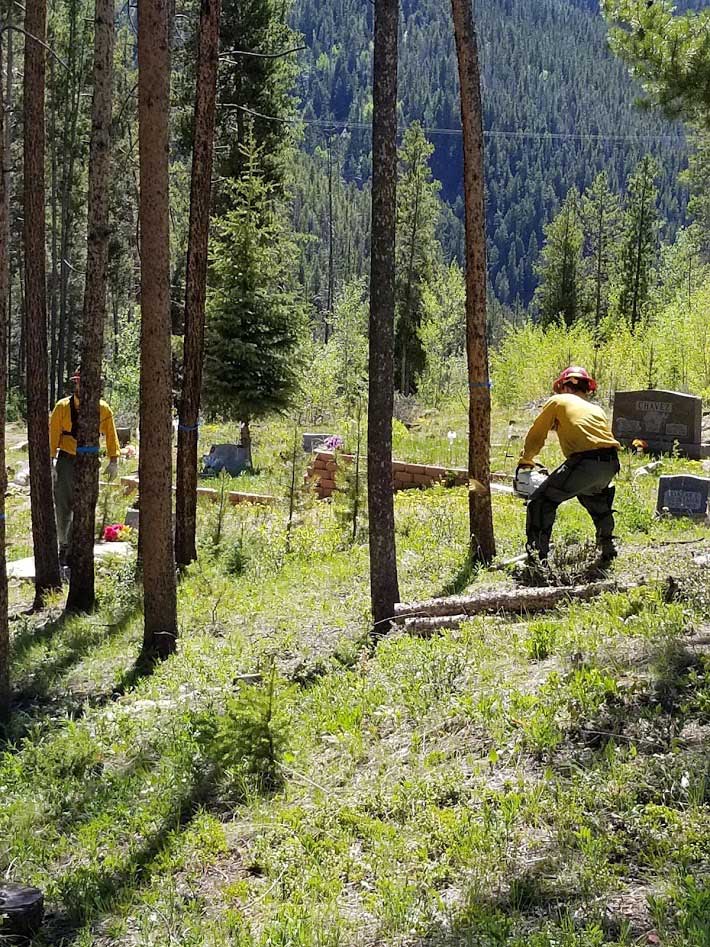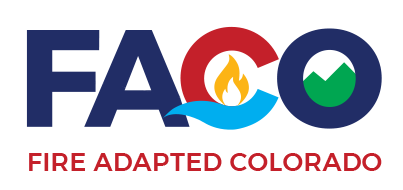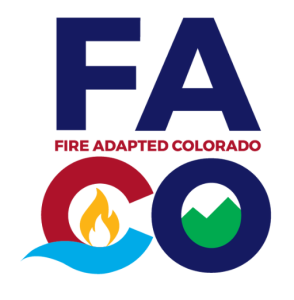Opportunity Fund Supports FACO Members
Fire Adapted Colorado has a wide range of members, from organizations dedicated entirely to helping their ‘whole community‘ prepare for wildfire to agencies and businesses for which wildfire preparedness is only one part of their mandate. For the non-profit, wildfire council type organizations, covering the basic costs of doing business and developing branding or outreach materials that connect more people to their important work can be a financial struggle. For an agency, while the lights might be on for many reasons beyond wildfire preparedness, getting wildfire preparedness activities on the radar or making them a priority can be challenging.
To help wildfire preparedness movers and shakers meet these challenges, Fire Adapted Colorado established an Opportunity Fund last year and it is open again to members for early 2019 projects. This opportunity is meant to give a little leverage (up to $2,500 match) to make meaningful projects happen that will help Coloradans live with wildfires. The application can be accessed here and can be submitted through this Friday afternoon, November 30, 2018, for members. If you are not a current FACO member but you’d like to become part of our Colorado peer learning network to share and learn from other Fire Adapted Community practitioners, build your capacity through member only online and in-person webinars, learning exchanges, and workshops, and get access to the FACO Opportunity Fund and other future capacity building support, learn more and apply to become a member here.
Here is a run down of the 2018 projects supported by the Fire Adapted Colorado Opportunity Fund to give you some ideas of how a little investment can go a long way toward community wildfire preparedness efforts:
Grand County Wildfire Council (GCWC) hosted two community chipping days in June providing free slash disposal to residents. These two events had over 70 landowners mitigate 131 acres after completing 310.5 hours of mitigation work on their properties for a total of 150 loads of slash chipped and removed. These events were supported by five volunteers working a total of 48 hours to complete the project. GCWC intends to host these community events again in 2019.
The Eagle River Fire Protection District (ERFPD)
 sponsored a collaborative community event to educate the Town of Red Cliff about their wildfire risk and the need to reduce fuels in
sponsored a collaborative community event to educate the Town of Red Cliff about their wildfire risk and the need to reduce fuels in
critical areas. The event included disposing of slash created during the project. Slash disposal provided an incentive and brought awareness to home and business owners. Over four tons of slash was collected in the removal of ladder fuels and hazard trees from around homes, businesses, and the town. The group also removed slash from a historic cemetery and built comradery amongst the residents of Red Cliff and Eagle River Fire. ERFPD will continue to emphasize wildfire risk via the town newsletter each spring and maintain that awareness through wildfire season, encouraging homeowners to maintain defensible space.
Eagle County Wildfire Council (ECWC) utilized the Opportunity Funding to kickstart a wildfire pre-incident map product to build relationships as well as coordinate efforts and knowledge sharing between all fire agencies working in the county. The funding supported the initial staff time necessary to pull together the first working version of the map book of WUI areas and community critical information as well as a framework to continue to build this product into the future. The map book was made available to all response agencies in paper form for the 2018 fire season. Next steps include creating a digital version of the maps that are easily shareable with other response agencies.
The Dolores Watershed Resilient Forest Collaborative (DWRF) developed a brand for their watershed wildfire protection group including a logo and website as well as provided training for DWRF Collaborative staff to maintain their website . The website will serve as a hub for information about watershed resilience in the community and is being promoted through outreach materials and at events.
Middle Arkansas Wildfire Prevention Partners (MAWPP) used funds to publish homeowner training materials that were distributed during the Beulah Mitigation Training event combined with the Wildfire Community Preparedness Day. The event provided approximately 100 people with basic training on creating defensible space, and was a good networking opportunity for private, local, state and federal agencies. In cooperation with Coalitions and Collaboratives, four homeowners within the Wildland-Urban Interface were granted $1,000 toward mitigation on their properties. This was a significant draw for people from the local area. MAWPP will continue to distribute these materials at training and events in their communities.
For the West Region Wildfire Council (WRWC), the Opportunity Fund award provided the last amount of required match needed to complete a Wildfire Risk Reduction grant for an unorganized rural WUI area with a very high wildfire risk. WRWC and partners completed a rapid wildfire risk assessment of every home in the identified area, which involved two counties (Montrose and Ouray). Residents participated in a Community Chipping Program coordinated by the WRWC to mitigate 4,725 cubic feet of hazardous material, and homeowners contributed 95 hours of in-kind time to mitigate fuels and build slash piles. Due to this engagement effort, thirteen homeowners requested site-visits and six homeowners in the project area completed defensible space projects using WRWC cost-share program support to mitigate 25.55 acres of hazardous fuels on their properties. WRWC will continue outreach efforts through site visits and resident fire mitigation education.

